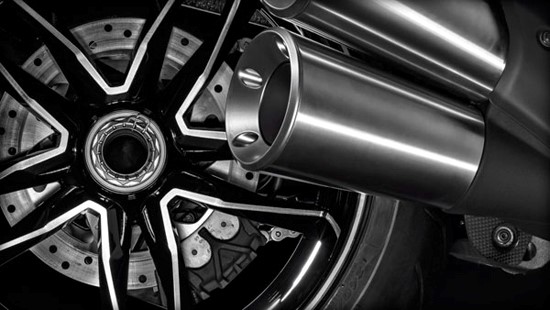Application Of Titanium In The Automotive Industry
Titan is a silvery‐white transition metal. It has low density, high strength, a metallic lustre and resistance to chloride wet corrosion. In this article we examine the application of Titan in the automotive industry in detail. Advanced technologies have led to the use of Titan in the automotive industry, particularly in motorcycle sport.

Application of Titan in the Automotive Industry
The primary aspects include weight reduction and enhanced performance. Vehicles produced with Titan demonstrate reduced fuel consumption and lower emissions. However, the high cost of the metal limits its use in the general consumer market.
Recent automotive designers construct vehicles and components with less weight by using Titanrohre and welded Titan tubes. This design approach enables private vehicles to achieve a specific appearance and style.
Reducing vehicle size and modernising design is current practice. This strategy faces a challenge in managing interior space efficiently. Designers adjust the space for passengers and their belongings. Lighter vehicles are required without compromising seating capacity and storage. Designers also must consider reducing fuel consumption and maintaining an environmentally friendly production process. Only Titan meets these criteria. Although it is relatively expensive, Titanlegierungen remain the most frequently used materials in the motorsport industry.
The quality of the metal and the production time for high-performance automotive components are key factors. The manufacture of engine parts for racing cars requires high-strength Titan because it must deliver high performance, rapid rotation and prompt responsiveness. The automotive industry has achieved significant progress through the use of Titan. Its application improves vehicle corrosion resistance, increases available space and reduces weight, thereby resulting in greater fuel savings.
The properties of low weight, corrosion resistance and high strength in the silvery metal make it a viable alternative for various automotive applications. However, the high cost of the material is a significant obstacle to broader utilisation. This is why it is not available in large quantities in sectors such as aerospace.
However, with the emergence of new techniques, manufacturers are now investigating methods to produce cost-effective Titan for various applications. As costs decrease further, prospects for consumer-related applications will increase, thereby making the use of Titan an increasingly important alternative.
Conclusion
We thank you for reading our article and trust it has provided you with a clearer understanding of the application of Titan in the automotive industry. Should you wish to learn more about Titan and Titanlegierungen, we recommend that you visit Stanford Advanced Materials (SAM) for further information.
Stanford Advanced Materials (SAM) is a global supplier of Titan products and has over two decades of experience in the manufacturing and distribution of Titan and Titan alloys. It provides Titan products that meet the research and production requirements of its clients. We expect that SAM will be your chosen supplier and business partner for Titan products.

 Bars
Bars
 Beads & Spheres
Beads & Spheres
 Bolts & Nuts
Bolts & Nuts
 Crucibles
Crucibles
 Discs
Discs
 Fibers & Fabrics
Fibers & Fabrics
 Films
Films
 Flake
Flake
 Foams
Foams
 Foil
Foil
 Granules
Granules
 Honeycombs
Honeycombs
 Ink
Ink
 Laminate
Laminate
 Lumps
Lumps
 Meshes
Meshes
 Metallised Film
Metallised Film
 Plate
Plate
 Powders
Powders
 Rod
Rod
 Sheets
Sheets
 Single Crystals
Single Crystals
 Sputtering Target
Sputtering Target
 Tubes
Tubes
 Washer
Washer
 Wires
Wires
 Converters & Calculators
Converters & Calculators
 Write for Us
Write for Us

 Chin Trento
Chin Trento



